- Home
- Allison Brennan
Playing Dead pb-3 Page 14
Playing Dead pb-3 Read online
Page 14
And looking at the body now, Mitch couldn’t see anything obvious. There were no visible wounds that would indicate cause of death. No bullet or knife wounds. But with the skin slippage and advanced putrefaction, obvious wounds might be unnoticeable.
Mitch watched in silence as the pathologists removed and weighed organs that no longer had the color and shape they should have. How they knew what section was the heart and what was the lungs, he didn’t know.
When the senior pathologist removed the brain, she said, “Now this is interesting.”
“What?” Mitch asked.
She pulled the camera in closer and Mitch focused on the television screen over his head. “See it?”
“No.” All Mitch saw was a lump of dark mass that had the basic form of a brain.
“Here.” She took a scalpel and touched a section of the brain that was a slightly different color than the remainder.
“Okay, you got me. What?”
“This is discolored because it was bruised prior to death.”
“Are you saying he was hit on the back of the head before he died?”
“I’m saying that his brain was bruised prior to death, but there were no open wounds.”
“How can you tell?” Clarkston asked, nose wrinkled in disgust.
“The fish would have attacked his brain if it was bleeding externally at the time of death,” the pathologist said. “Though you might want a professional marine biologist to consult.”
“You’re right,” Mitch said. “Fish and other organisms in the water would have focused their feeding activities on any exposed areas. You can see that they primarily ate the face and fingers. What about his skull?”
“I’m getting to that,” she said, slightly irritated. Mitch swallowed a snide comment.
“There wasn’t anything as obvious as a bashed-in skull,” she continued, “when we made the external examination.” With the help of one of the assistants, she turned Maddox’s body on one side. She examined the skull closely. “Hmm.”
“What?” Mitch couldn’t help but ask.
“There is a fine crack in the skull. Here, right at the base.” She pulled the camera closer. Mitch could see the damage only when she pointed it out using the sharp end of her scalpel.
“That’s interesting,” Clarkston said.
The chief pathologist stepped into the room and said, “I’m done with the comparison. Your victim is Oliver Maddox. I’ll write up a report and send it to your office.” Then he was gone.
Nothing that Mitch didn’t already know, but it was nice getting the confirmation.
“What’s that?” the assistant pathologist said from the room.
Mitch turned his attention back to the table. The stomach had been removed-or what was left of it. Inside was something bright pink.
The senior pathologist placed the stomach on the scale and cut it open. She removed the object and frowned.
“It’s plastic.”
“It’s a flash drive,” Mitch said, incredulous, staring at the thin device half the length of his thumb. “That was in his stomach?”
“Yes,” the pathologist said.
“You’re sure, right? Stomach and not the intestines?”
“Yes, I’m sure.”
“Why is that important?” Steve asked.
“Because it would have passed through within twelve to twenty-four hours. If it was in his stomach, he likely swallowed it within six hours of death.”
“Swallowed a flash drive?” Clarkston asked. “What on earth for?”
“That’s what we need to find out,” Mitch said. He looked the deputy in the eye. “Will you let us work the drive? I’ll send you a report as soon as we know what’s on it.”
Clarkston frowned. “Well-”
Steve said, “Our Silicon Valley lab is state of the art. Twenty-four hours or less.”
Clarkston was reluctant, but said, “Okay.”
“Pink,” Mitch said. “I’ll bet it was his girlfriend’s. Maybe she knows what’s on it.”
“Twenty bucks we get nothing from that,” Steve said to Mitch.
Mitch didn’t want to take the bet, but said nonetheless, “You’re on.”
SEVENTEEN
After getting a copy of Oliver Maddox’s missing person report from the Davis Police Department, Claire drove back to Sacramento and headed to the county archives. She’d been so tense after her conversation with Collier she decided to postpone talking to Oliver’s girlfriend Tammy. She needed to go over her father’s trial transcripts and see if Frank Lowe had played a role she didn’t remember. But more important, to truly follow in Oliver’s footsteps, she needed to know these case files inside and out. Something in the files Oliver found at the Western Innocence Project had piqued his interest. Maybe she’d see the same thing.
The archives housed most county records and Claire had been there many times in the course of her investigative work. Generally, she’d have to wait to access files-they needed to be researched and pulled. Depending on workload, it could take a few minutes or several days. But Claire played the grieving daughter card and it worked. The bureaucrat behind the desk took pity on her and pulled the O’Brien case file out of order.
Twenty minutes later, Claire sat in the far corner of the public area staring at the outside of a brown file box. One box. The entire case against her father had been reduced to a box. Murder trials often had dozens of archived boxes. Everything went inside-police reports, crime scene photos, depositions-anything used in the trial.
She breathed deeply and opened the box.
It was obvious that a bunch of stuff was missing. She took everything out, trying to figure out what wasn’t in the box. There were motions, transcripts from jury selection, and the sentencing hearing.
The entire court transcript of the trial was gone. There was no witness list, no crime scene report, not even the coroner’s report.
There had to be another box. She looked on the outside of the box. It was labeled “The People of Sacramento County vs. Thomas M. O’Brien.” In the bottom right-hand corner was the notation “2 of 2.”
She walked back to the lady who had helped her before and told her there was another box.
The woman sighed. “If there’s another box, it’s filed wrong and there’s no way I can find it now. Fill out this form and I’ll have someone research it.”
“Thank you,” she said, repressing her frustration.
Claire took the form back to her table and went through the documentation that was in the box. Most of it was motions, but she noted her father’s attorney-George Prescott, Esq. She wrote down his contact information. Maybe he’d have a copy of the transcript.
While there was no crime scene report, the original police report and photos were inside. Claire took a deep breath and opened the folder.
Officer Adam Parks had filed the following report:
Responded to an anonymous call of shots fired at 1010 35th Avenue. Upon arrival, a Sacramento Police Officer, Sergeant Thomas O’Brien, was exiting the residence with a minor female, later identified as his daughter, Claire O’Brien. It was quickly determined that the residence belonged to Sgt. O’Brien. Sgt. O’Brien informed this responding officer of two bodies, presumed dead, inside the residence in the rear bedroom. He voluntarily handed over his service revolver, which was logged in to evidence. Inside, this officer ascertained that there were two victims and they were both deceased. We searched the house and garage to ensure there was no intruder on the premises, then secured the scene and called in the possible officer-related shooting.
That was the only police report in the file. There should have been reams of paper-interviews, follow-ups, a canvass. Who had made the anonymous call? A neighbor? That should have come out in the canvass. What about the detective assigned?
Claire thought back to the trial. It physically pained her-she’d spent years working hard to forget every detail of the nine months between the murders and her father’s conviction. She recall
ed that the sheriff’s department had been assigned the investigation because of a conflict of interest since the primary suspect was a Sacramento Police Officer.
Again, she realized that she should talk to Bill. He’d been with the sheriff’s department for thirty-two years. He’d know far more about her father’s case and the subsequent investigation.
Also in the box were four unmarked photos, which made Claire think they hadn’t actually been used in trial. They were snapshots, and that in and of itself was odd. Where were the crime scene photographs? There should have been hundreds of them. If the murders occurred now, there might simply be a disk of photos, but fifteen years ago they were still using film and archiving the hard-copy photos.
The photos were in color, and though faded, were still disturbing.
Her mother and Taverton were in a deadly embrace. Blood was everywhere, just like Claire remembered. The blood had seeped from the gun wounds, but there was no battle, no fight, no movement of the dying. Death was as instantaneous as you could get. If she had either the coroner’s report or the crime scene report, she’d know how far away the killer had been when he fired and from what angle. But those reports were also missing.
She looked at the next photo and gasped. She stared into the dead eyes of her mother. Her face had been obscured in the first photo, but this was taken from another angle.
Mom.
She’d always been closer to her father than her mother. Growing up, she had not understood why. She and her mother argued about everything. Claire blamed herself. She’d been an obstinate kid. A brat. And when her mother was dead, she could no longer tell her that, even with everything they fought over, Claire loved her. They may never have been friends, but Claire loved her nonetheless.
And because she knew, even at fourteen, that she’d been so wrong about her mother. The good and the bad.
Waves of agony washed over Claire. “I’m sorry, Mom. I really did love you.”
I’m sorry, Dad. I should have believed you from the beginning. But it looked like you’d killed them.
Maybe if Claire had been more open to listening to Oliver Maddox, he would have shared with her his theory. If she had just given him half a chance, she could have been working this for the last four months. Oliver might not have died.
Maybe she would have.
The facts jumped around in her brain. The killer must have known what Oliver had found, and feared exposure. But maybe Oliver didn’t realize the importance of what he had, otherwise why wouldn’t he have gone to the police? Oliver had been murdered-she was certain of it, no matter that Dave told her last night that his car crash into the Sacramento River could have been an accident.
She needed the coroner’s reports. Both for her mother and Chase Taverton, and for Oliver Maddox. Fortunately, she knew the supervising forensic pathologist at the morgue.
Mitch and Steve walked into the Davis Police Department at 10:30 Thursday morning after finishing up with the autopsy and working out jurisdictional evidence issues with the sheriff’s department. The flash drive was already on its way to the FBI’s computer forensics laboratory in Menlo Park, less than three hours away. They figured the best way to preserve any information that had been saved on the chip within the submerged stomach of Oliver Maddox was to have the best computer minds in the Bureau work it.
Detective Theo Barker introduced himself to the Feds. “I made you a copy when you called earlier,” he said.
“Thanks,” Mitch said and glanced through the report. Standard missing persons-the girlfriend called it in three days after she last saw Maddox, which was approximately noon on Sunday, January 20 when she left him, alone, at his town house on F Street. A neighbor reported seeing the white Explorer pull out of the driveway at dusk-which put his departure roughly at 5:30 p.m. That was the last reported sighting of Oliver Maddox.
There were interviews with the girlfriend, his advisor, classmates, neighbors, and his grandmother who lived in the Midwest. Nothing unusual, but Mitch would need to read it in more depth.
“Sorry to hear he’s dead,” Barker said, “but that’s what I suspected. Young college student like that without financial or female problems doesn’t just walk off. But what is the interest of the FBI? Your people don’t investigate routine traffic fatalities.”
“The cause of death is possible homicide,” Steve said.
“The FBI doesn’t usually investigate routine homicides, either.”
“We’re working with the Sacramento County Sheriff’s Department,” Steve said. “Maddox was a person of interest related to one of the fugitives from San Quentin.”
“Think a convict killed him? I hadn’t heard of any in this area.”
“No, he was dead before the earthquake,” Mitch interjected.
“By the way, there’s a private investigator interested in the file. A real looker.”
Mitch knew it was Claire, but asked anyway. “Do you have her name?”
Barker slid over a business card. “I didn’t know Rogan-Caruso would take such a small case, but live and learn.”
Mitch picked up the card. CLAIRE O’BRIEN, LICENSED INVESTIGATOR. Steve glanced at him without expression. “Thanks,” Mitch said. “Appreciate the help.”
They left the police station and drove over to the university. Steve asked, “How did she find out Maddox was missing?”
“Maybe she knows he’s dead,” Mitch said. “She has a lot of friends on the force.”
“She’s walking into the gray area,” Steve warned.
“I know.”
Steve’s cell rang and while he talked, Mitch ran through last night. Claire was definitely more on edge than she’d been in the recent past, but he couldn’t pinpoint any one thing that made him suspect she had been in communication with her father. Yet it looked as if she’d taken on her father’s cause.
Steve hung up. “That was Meg. Five days ago O’Brien was possibly spotted in Redding.”
“Five days? Why’d it take so long for us to get the call?”
“The Shasta County Sheriff’s Department took that long to pull the tapes and look at them. They didn’t give a lot of credence to the sighting. It was a truck driver at a diner off the interstate. But they reviewed the tapes and think it might be O’Brien. A deputy is driving down with the tapes, should be here early afternoon.”
“If it was O’Brien, that means he’s in town by now.”
“You’re thinking something,” Steve said.
“There was a sticky note on Claire’s computer with her name printed on it. It wasn’t her handwriting. I couldn’t find anything that looked like it that came from O’Brien, but she did searches on Maddox and Collier.” He glanced at his watch. “She left at seven this morning. Collier’s first class was at eight. What if she went to talk to him?”
“About Maddox? Why?”
“To see if he knew what Maddox knew about her father. Maddox thought O’Brien was innocent. I know for a fact that Claire gave Maddox no credence-believe me, she believes her father is guilty.” Believed. “At least until recently. And I don’t know about now, but it looks like she’s trying to learn exactly what Maddox knew.”
“To clear her father?”
“To decide whether he’s telling the truth.”
“Fuck,” Steve muttered. “I put the fear of God in that woman, why is she screwing around with her future like this? She knows she could be charged as an accessory.”
“She blames herself for the murders, but if her father is innocent, she’d blame herself for not standing by him,” Mitch said.
“She told you that?”
“Not in so many words, but she did talk about the murders last night.”
Steve glanced at him. “And she left at seven in the morning? You slept with her, didn’t you?”
“I don’t see-”
“Dammit, Mitch, what are you thinking?”
“Steve-”
“Don’t bother making excuses.”
“I wasn’t
going to.” He should have, but he didn’t regret his relationship with Claire. He only regretted deceiving her.
“I knew you’d fallen for her, but you’re going to get yourself in deep shit if you persist in this. What if she is working with her father? What if she knows where he is and is helping him evade the authorities? Can you honestly tell me that your judgment isn’t clouded? That you can-oh, this is really fucked. Anything you learn we can’t even use to prosecute. You’ve contaminated the entire case!”
“Whoa, hold off a minute, Donovan,” Mitch said. “O’Brien is a fugitive, and we can pursue him using any means possible. There is no contamination, other than the fact that Claire will hate my guts when she finds out I lied to her.”
“We sure as hell can’t use anything you’ve learned to-”
“To what? Prosecute Claire for talking to her father? Is that what you really want to do? We don’t even know that she has seen him. What we’ve guessed is that somehow he got a message to her, told her something that prompted her to track down Maddox.”
“She’s supposed to report any communication, not just physical contact.”
“I get that. But we agreed that the most important thing was putting O’Brien in federal custody to protect him. Wrongly convicted or not, he is in danger on the streets. If Claire is in contact with him, being close to her will help us find him. If we push her, I won’t be on the inside.”
His deception suddenly took a darker focus. He was not only watching Claire, but actively using her. It made him ill, but it was the single best way they had right now of finding Tom O’Brien.
“Think she’s on to you?”
“No.” Claire wasn’t the type to keep her opinion to herself.

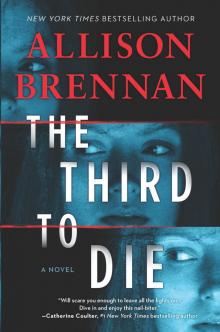 The Third to Die
The Third to Die Nothing to Hide
Nothing to Hide No Way Out
No Way Out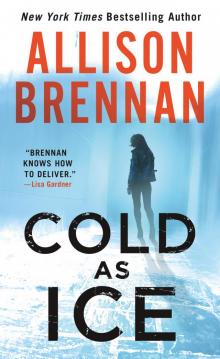 Cold as Ice
Cold as Ice Cut and Run
Cut and Run No Way Out (Lucy Kincaid Novels)
No Way Out (Lucy Kincaid Novels) Storm Warning
Storm Warning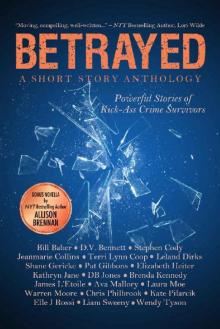 Betrayed: Powerful Stories of Kick-Ass Crime Survivors
Betrayed: Powerful Stories of Kick-Ass Crime Survivors Killing Fear pb-1
Killing Fear pb-1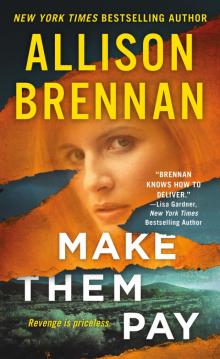 Make Them Pay
Make Them Pay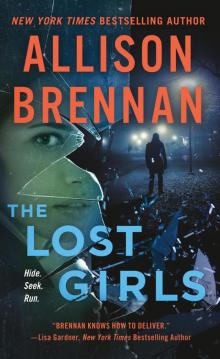 The Lost Girls
The Lost Girls Stalked
Stalked Killing Justice
Killing Justice A Deeper Fear
A Deeper Fear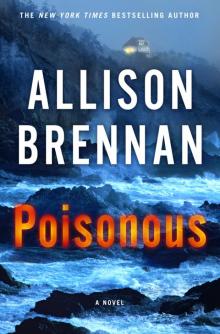 Poisonous
Poisonous Fear No Evil
Fear No Evil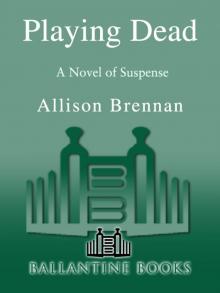 Playing Dead
Playing Dead Cold Snap
Cold Snap Vacation Interrupted
Vacation Interrupted Frosted (Moreno & Hart Mysteries)
Frosted (Moreno & Hart Mysteries)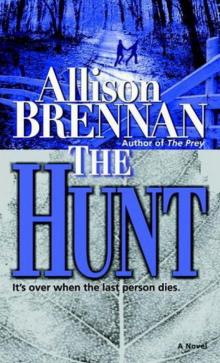 2 - The Hunt
2 - The Hunt Stolen
Stolen No Good Deed
No Good Deed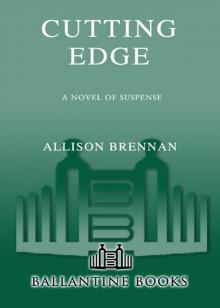 Cutting Edge
Cutting Edge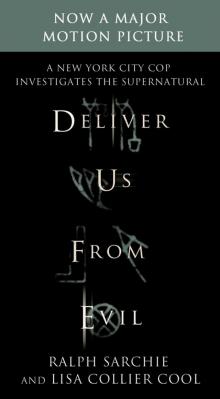 Deliver Us from Evil
Deliver Us from Evil If I Should Die
If I Should Die Speak No Evil
Speak No Evil Silenced lk-4
Silenced lk-4 Original Sin sds-1
Original Sin sds-1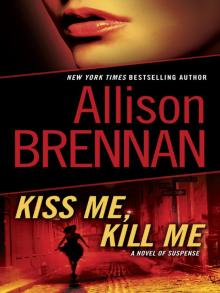 Kiss Me, Kill Me lk-2
Kiss Me, Kill Me lk-2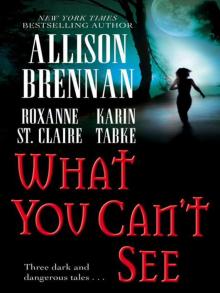 What You Can’t See
What You Can’t See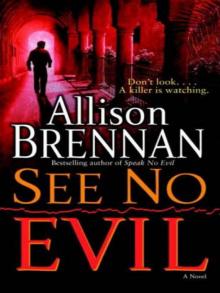 See No Evil
See No Evil The Prey
The Prey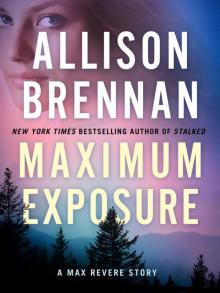 Maximum Exposure
Maximum Exposure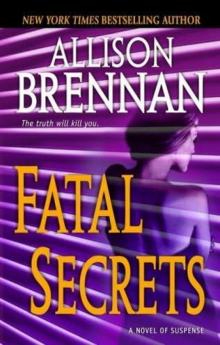 Fatal Secrets f-2
Fatal Secrets f-2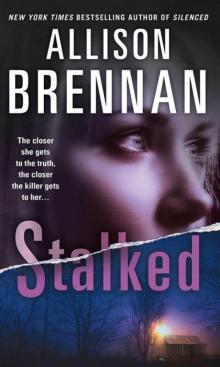 Stalked lk-5
Stalked lk-5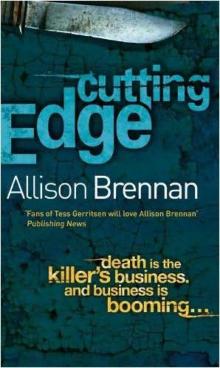 Cutting Edge f-3
Cutting Edge f-3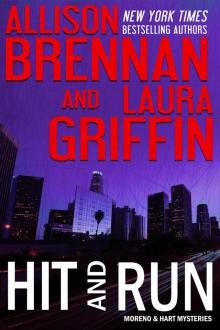 Hit and Run (Moreno & Hart Mysteries)
Hit and Run (Moreno & Hart Mysteries) Sudden Death f-1
Sudden Death f-1 If I Should Die lk-3
If I Should Die lk-3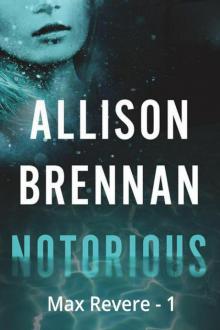 Notorious
Notorious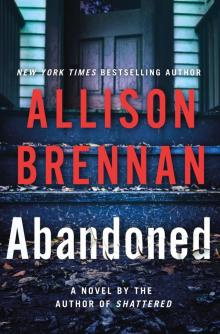 Abandoned
Abandoned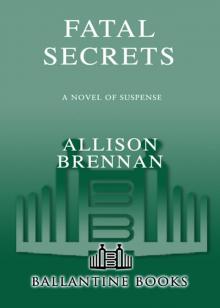 Fatal Secrets
Fatal Secrets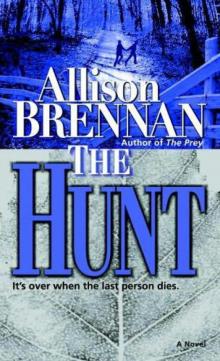 The Hunt
The Hunt Carnal Sin sds-2
Carnal Sin sds-2 Love Is Murder
Love Is Murder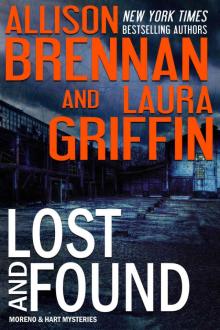 Lost and Found
Lost and Found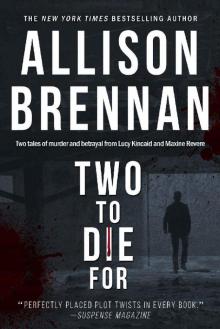 TWO TO DIE FOR
TWO TO DIE FOR Breaking Point
Breaking Point Best Laid Plans
Best Laid Plans Carnal Sin
Carnal Sin Silenced
Silenced Dead Heat
Dead Heat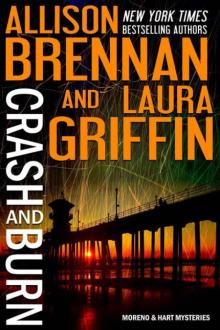 Crash and Burn
Crash and Burn Sudden Death
Sudden Death Lucy - 05 - Stalked
Lucy - 05 - Stalked Mortal Sin
Mortal Sin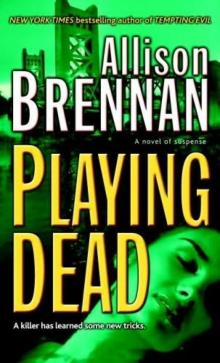 Playing Dead pb-3
Playing Dead pb-3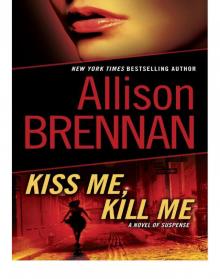 Kiss Me, Kill Me
Kiss Me, Kill Me Original Sin: The Seven Deadly Sins
Original Sin: The Seven Deadly Sins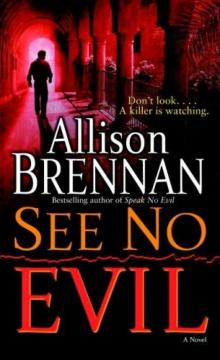 See No Evil e-2
See No Evil e-2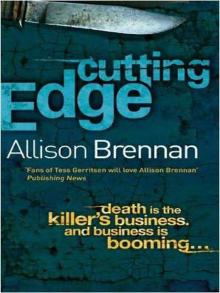 Cutting Edge: A Novel of Suspense
Cutting Edge: A Novel of Suspense Original Sin
Original Sin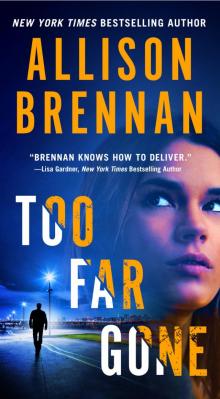 Too Far Gone
Too Far Gone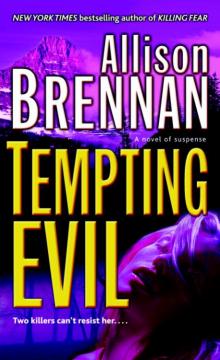 Tempting Evil
Tempting Evil Shattered
Shattered Killing Fear
Killing Fear Murder in the River City
Murder in the River City Love Is Murder (lucy kincaid)
Love Is Murder (lucy kincaid) Stolen (Lucy Kincaid Novels)
Stolen (Lucy Kincaid Novels)